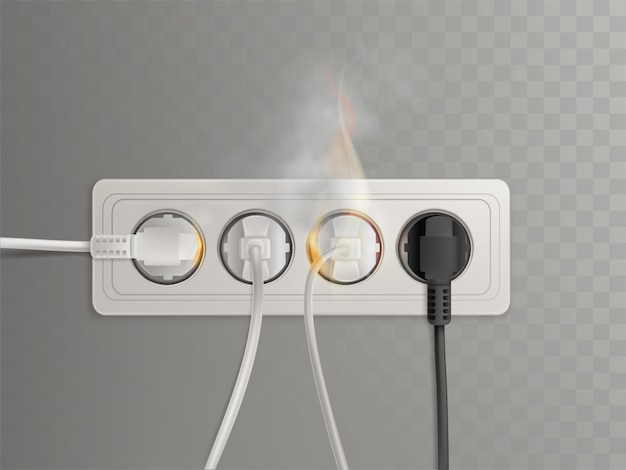
How To Store Extension Cords To Prevent Damage
Storing extension cords might seem like a mundane task—hardly worthy of scrutiny—but how you store them can determine whether they serve you faithfully or become a tangled nuisance. Few things match the frustration of reaching for a cord only to find it snarled.
A little attention to detail can go a long way in keeping these household heroes alive. No one wants to be the host whose cord maintenance is so bad that they blow a fuse or start a fire.
Bad storage habits do more than test your patience; they can damage the cords. Damaged cables, frayed edges and exposed wires are all signs of neglect and potential danger.
The solution? It starts with learning how to treat them with care.
Let’s break down five simple ways to store extension cords. Each method will keep them untangled, functional, and wear-and-tear-free. These aren’t complicated plans but practical steps to save your cords and sanity.
1. Coil Them Properly
First, you must learn how to coil them properly to ensure they stay in good condition. A poorly coiled cord can get tangled or develop kinks and be damaged forever. Treat them like a garden hose: start at one end and let the cord form loops naturally without forcing it into unnatural shapes.
Don’t wrap the cord too tight or use your elbow as an impromptu spool when coiling. Both will strain the wires within the insulation. Instead, hold one end of the cord and gently guide it into loops the size of a dinner plate. If it resists, you’re twisting too much. Let it find its way.
Once coiled, tie the loops with a Velcro strap or a reusable zip tie, not a knot. This keeps the cord neat and doesn’t stress the internal wiring. Coiling your extension cords isn’t just about looks but longevity and performance.
2. Store Them Off the Floor
Don’t leave extension cords on the floor. Floors are magnets for dirt, moisture, and the occasional stray pet looking for something to chew on. Hanging them up keeps them clean and less likely to get stepped on or run over by something heavy.
Install hooks or pegs in your garage or storage area and hang them by the loops. If you don’t have wall space, invest in a cord reel or a cord storage rack. These will keep the cords accessible without damage.
Hanging them also keeps them from getting misshapen. A cord coiled on the floor will develop flat spots or kinks over time, affecting its performance. Keeping them up keeps them in top shape when you need them.
3. Store Cords in Individual Hooks or Racks
Designating a spot for each extension cord may seem like overkill, but the benefits are worth it. Get a set of hooks or a wall-mounted rack. Install them in your garage, utility room or any dry spot where cords can hang freely. Gravity helps prevent kinks, and hanging them keeps them visible and accessible.
When cords are stacked, they become impossible to separate. Hanging them eliminates tangling altogether. It also prevents accidental damage from being crushed or bent out of shape. A hook system can turn a chaotic corner of your garage into a shrine of order, and you’ll feel a little smug every time you walk by.
Hooks are also practical and encourage accountability. Once you’ve assigned a hook to a particular cord, you’ll naturally be inclined to return it to its rightful spot.
4. Keep Them Away from Heat and Sunlight
Exposure to heat and sunlight can be surprisingly detrimental to extension cords. The plastic insulation that protects the wires can become brittle or discolored when subjected to prolonged UV exposure. Once the insulation starts to degrade, the cord becomes a safety hazard.

Always store your cords in a cool, shaded area. If you use them outdoors, ensure they’re rated for outdoor use and keep them out of direct sunlight when not in operation. A shaded garage or a cupboard works well for indoor storage. Avoid leaving cords near heaters, radiators, or other heat sources, as excessive warmth can accelerate wear and tear.
Temperature control isn’t just about longevity; it’s also about safety. A damaged cord can lead to electrical faults, and nobody wants to discover that their cord has become a fire hazard. Treat your cords like the valuable tools they are, and they’ll reward you with years of reliable service.
5. Store Them in a Designated Container
When hooks or wall space aren’t feasible, a designated container is your next best bet. Choose a sturdy box or bin with enough room to accommodate your cords without cramming them. Label the container clearly so you don’t have to play detective whenever you need an extension cord.
Plastic bins with lids are ideal for this purpose, as they protect the cords from moisture and dust. Drill a few small holes in the lid if you’re storing cords in a damp environment, like a basement. The ventilation prevents condensation from turning your cords into a breeding ground for mildew.
Inside the container, consider dividing the space with cardboard or plastic dividers. Each cord gets its little compartment, reducing the risk of tangling. Think of it as a cord condominium—everyone has their place, and nobody steps on anyone else’s toes.
Conclusion
Taking the time to store extension cords properly is a small investment with significant returns. Rolling them correctly, hanging them up, using designated containers, avoiding extreme temperatures, and inspecting them regularly will keep them in top condition. These steps aren’t complicated, but they do require consistency.
Treat your cords carefully; they’ll repay you by working when you need them most. And if nothing else, you’ll have one less thing to untangle—which is worth its weight in gold.
Related Posts
© 2025 Invastor. All Rights Reserved

User Comments